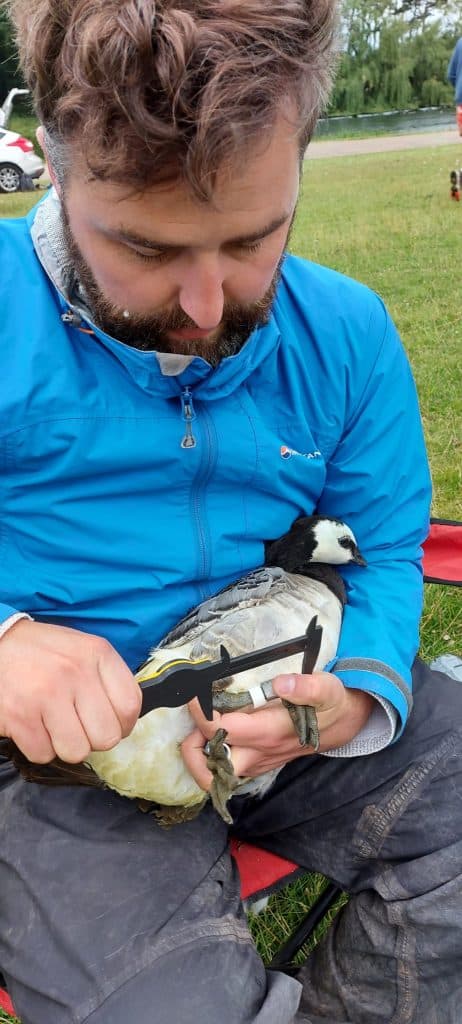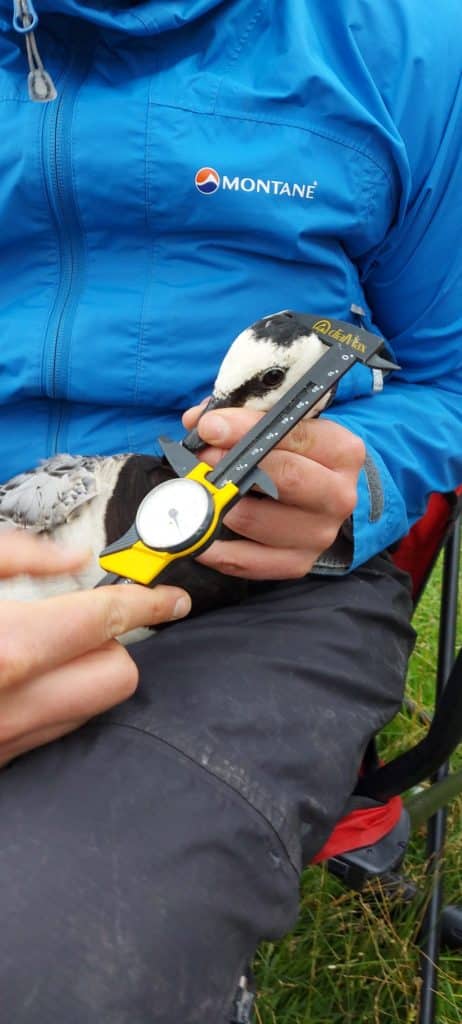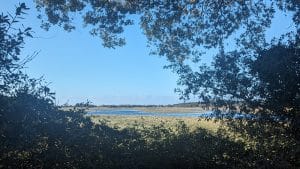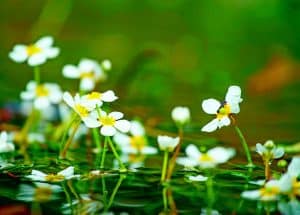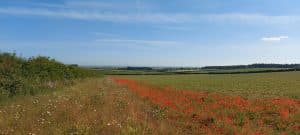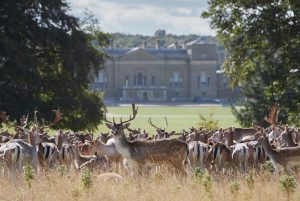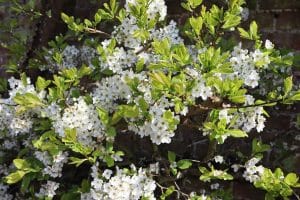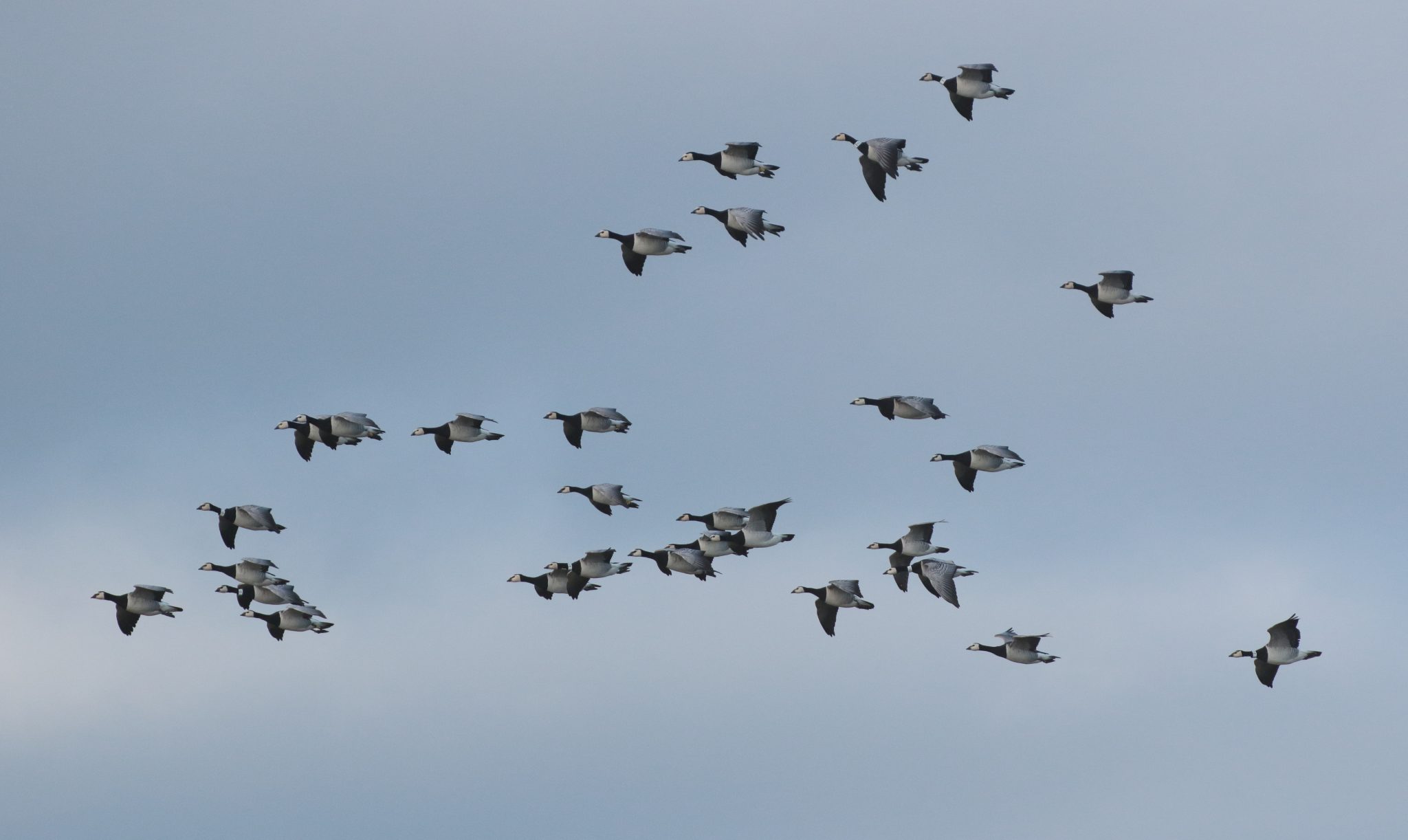
World Wildlife Day: Following the flocks of Barnacle Geese
March 3, 2023 | Nature news | 6 minute read
Today, Friday 3rd March, is World Wildlife Day, a UN international day celebrating the world’s wild animals and plants. This year, the theme is Partnerships for Wildlife Conservation. Here, Andy Bloomfield, Senior Warden on the Holkham National Nature Reserve, tells us the story of the Barnacle Goose and the work we have been doing under a scheme developed by Kane Brides of the Waterbird Colour-marking Group to help answer some mysteries about the geese which reside at Holkham Lake.
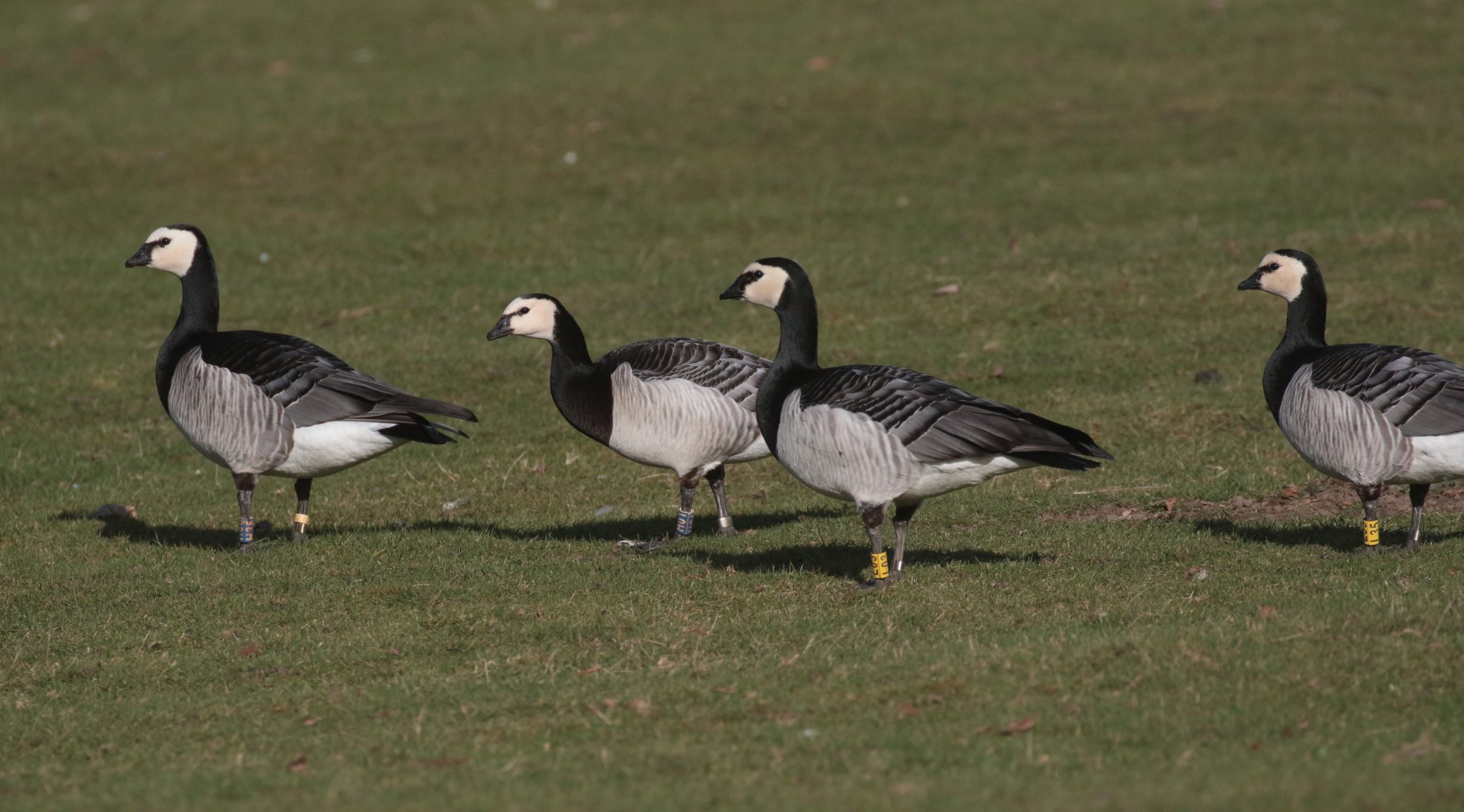
The origins of Barnacle Geese
The Barnacle Goose is an attractive, small, black and white goose. Historically it was a very infrequent winter visitor to Norfolk in the coldest of weather. It breeds high up in the Arctic tundra of places such as Greenland, Svalbard and Novaya Zemlya in northwest Russia. Most of these populations ordinarily move south to winter in either Scotland or the Netherlands.
For anyone who regularly visits Holkham, it is now instantly apparent how the Barnacle Goose is a resident of Holkham Lake. It is both a conspicuously tame and noisy species. Or at least, it is in the summer months. That was not always the case and indeed from what you have just read, the scenario is rather contrasting to what has long been thought to be the norm. The geese started to appear in the early 2000s and began nesting on the islands of the lake in 2004. Since then, the population has steadily grown and in the last two years we have seen over 50 broods of youngsters fledge and a flock that has numbered over 500 gather before they finally disappear in the autumn.
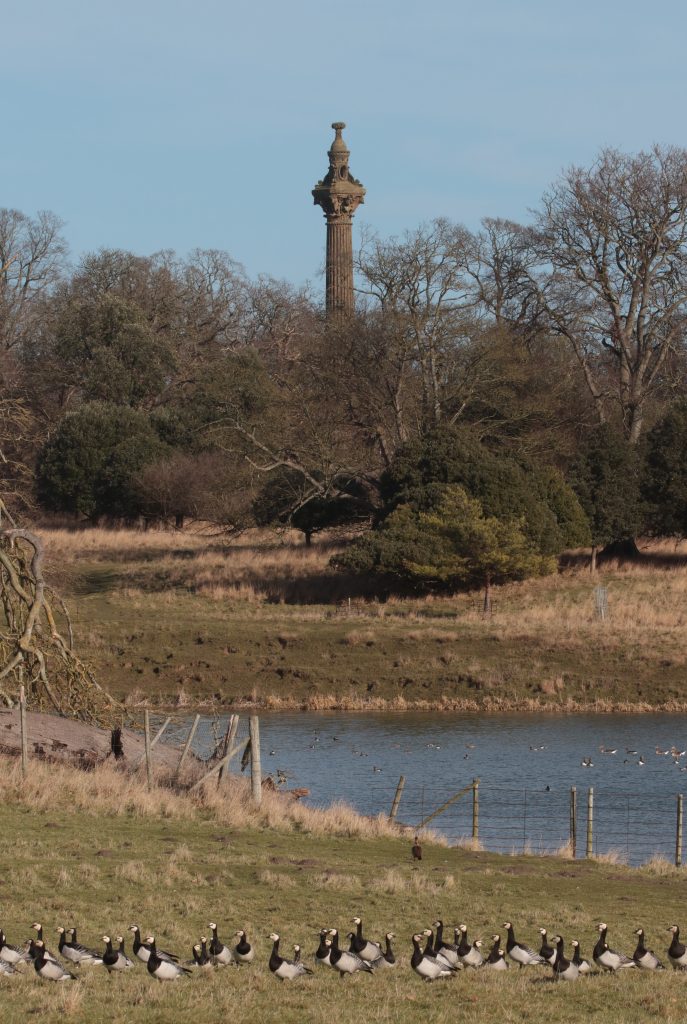
So, if the Barnacle Goose is ordinarily a winter visitor from the Arctic, why is it now nesting on Holkham Lake and what are the origins of these birds?
These are the questions that we started to ask ourselves yet for a long while we were perplexed at finding answers. Unbeknown to us the same questions were being asked by a keen ornithologist called Kane Brides who is part of the Waterbird Colour-marking Group. He had found the same situation developing in other parts of the UK too.
As well as being a wild winter visitor to these shores, Barnacle Geese are also popular additions to captive wildfowl collections both in the UK and on the continent. What has then happened is that they breed quite readily and sometimes if the young are then not suitably homed or their wings clipped, they escape as free-flying feral birds. In turn these may then breed and the formation of a feral population then becomes a reality. On the continent, birds nesting in the Netherlands are thought to be as a result of escapees and also birds that winter there from the Russian population. So again, the Holkham breeding birds have thrown up many interesting questions. Could they be connected to the Dutch population or could they have been as a result of birds escaping from collections in the UK?
The ringing process
Under a scheme developed by Kane and the Waterbird Colour-marking Group, we have now caught and ringed a large number of the Holkham population. This involves a military precision styled operation when the birds moult their primary wing feathers and become flightless. This then allows us to shepherd the geese that are flocked up in July into the lake and then gently flush them towards a pen for catching and then ringing. We involve volunteer ringers, the gamekeepers and canoeists from Norfolk Adventures (who run the Ropes Course) to undertake the whole operation and make it work as swiftly as possible.
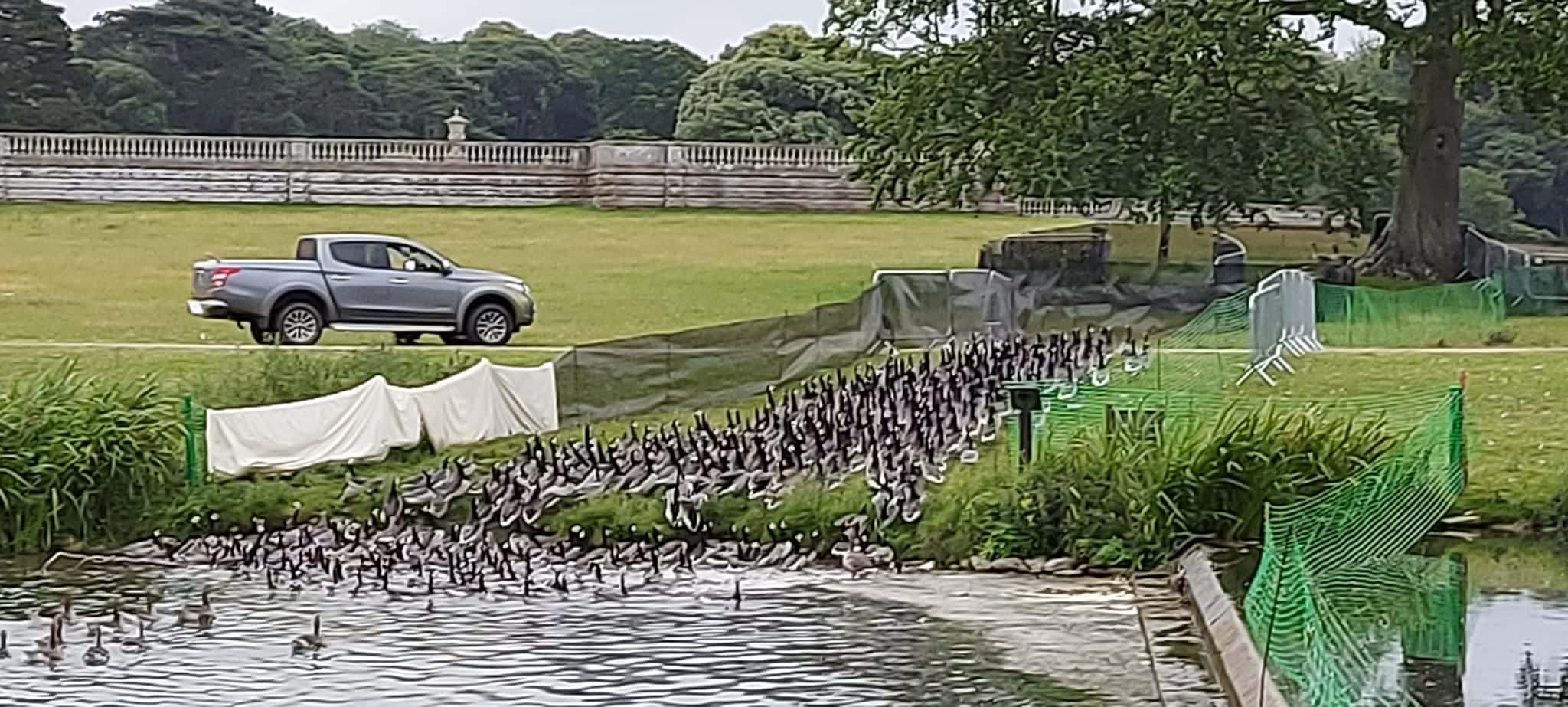
Barnacle Geese being shepherded into an enclosure beside the lake for ringing
When caught each goose is weighed, measured, aged and sexed before individually marked colour rings are placed on their legs to enable them to be identified wherever they are seen. For example in 2022, 421 Barnacle Geese were caught and processed at Holkham.
Lessons learnt
With the project now two years in, what have we learnt and are all the mysteries solved? I suppose we can say yes and no.
With all birds that are ringed, their journeys and whereabouts throw up as many curve balls as they do definitive answers. Most of our birds leave Holkham in the autumn and then spend the winter in Suffolk. When they return in March, they often spend a month prior to that in the Wensum Valley south of Fakenham. Others have been seen on the sugar beet fields amongst the wild wintering Pinkfeet, whilst one journeyed to the Netherlands, the first foreign sighting.

What we don’t know currently is if this means some birds perhaps originated from across the North Sea or were they part of a feral population that built from Pensthorpe near Fakenham. With a breeding population also in coastal Suffolk which has had links with the Dutch population, could it be that some originated from there too?
Even more perplexing is the knowledge that a big population has also grown in the north of England at a variety of sites including many in the Humber Estuary. Could there be movement from there too?
Very recently a group of 36 Barnacle Geese arrived at Holkham bearing numbered neck collars and these it turned out had originated from North Yorkshire and then spent the winter in East Sussex. Miraculously, only the day before they turned up at Holkham, they had been seen in East Sussex. All this information goes some way to show the complexities of the movements of just one species and the value of ringing birds. It is also pleasing for Holkham to be involved with unravelling some of these mysteries.
You can find out more about World Wildlife Day here and follow more of the Nature Wardens’ work at @holkhamconservation on Instagram.
Back to Journal Back to Journal